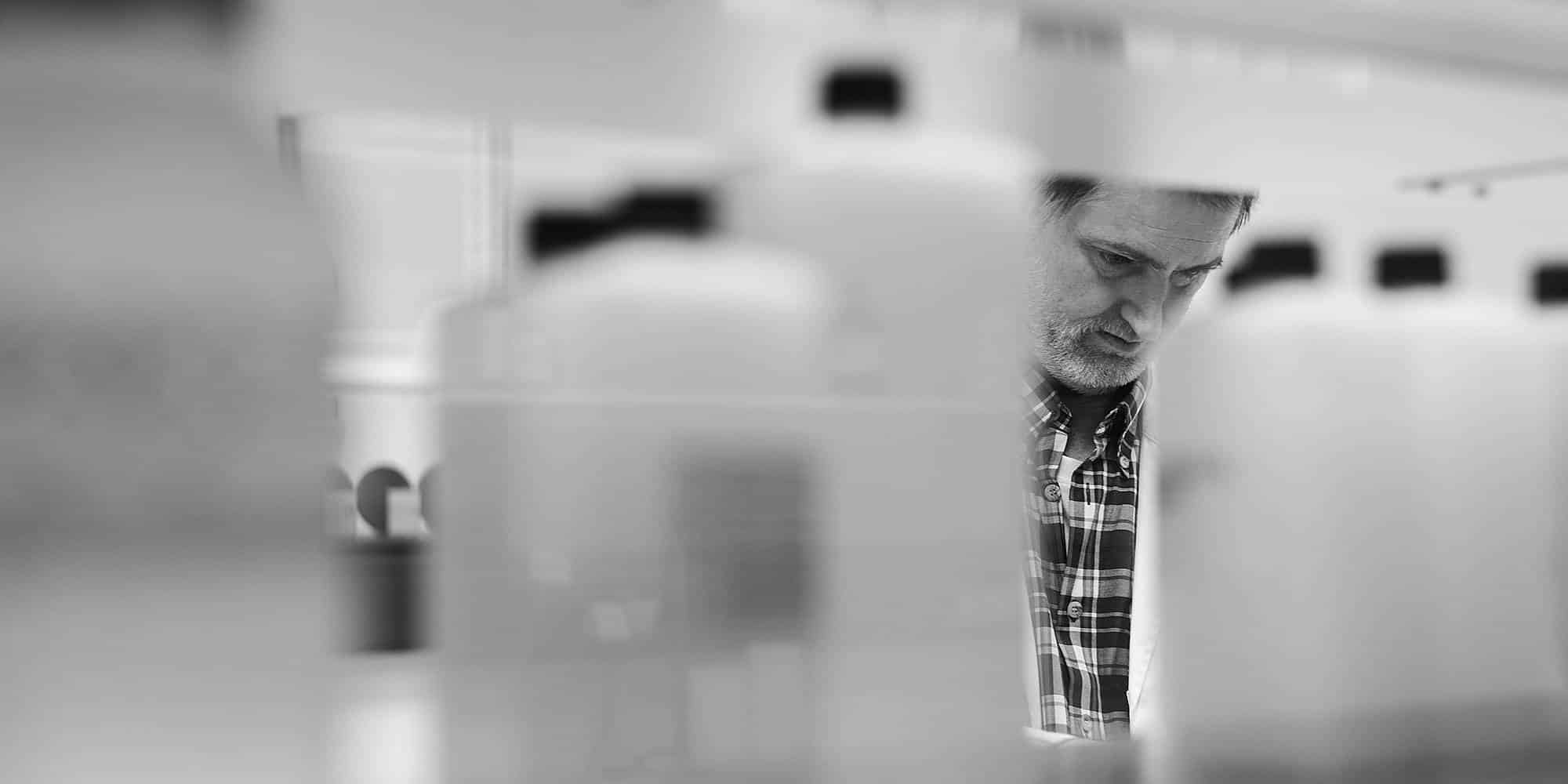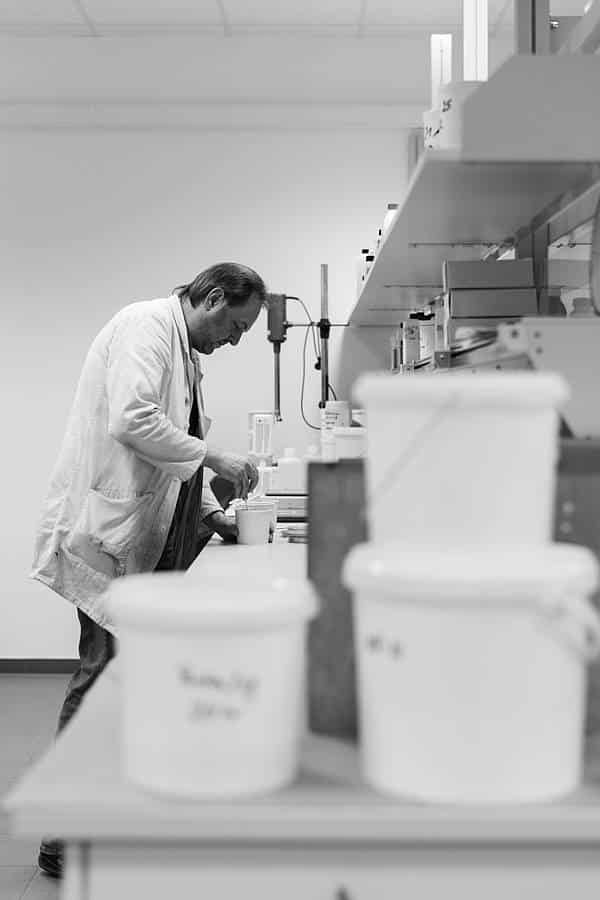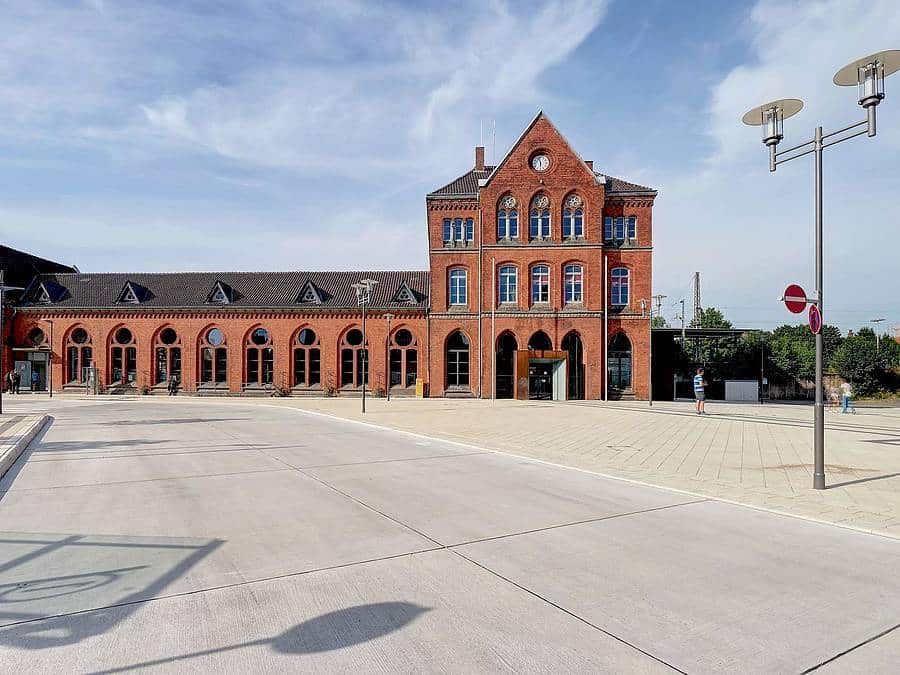
Stories
Until the Chemistry’s Right
Test, improve, research: the RECKLI Technikum team upholds high material standards and develops innovations for the textured concrete of tomorrow. The developers have just moved into their new work rooms. A visit to the lab.

Dr. Christoph Richter’s eyes are glinting with enthusiasm. “Finally, more space to spread out!” The chemist and head of the RECKLI research department stands with his hands on his hips, taking in his new workspace: now that the RECKLI facility has moved to Herne, the research laboratory has more space. It smells like a new building, of fresh plaster and grouting.
All around him, people are busy at work. His two colleagues, Janus Woclawek and Andreas Düsener are unpacking, arranging folders, bottles and glasses, and delegating to the other helpers. Now and then, there is muffled laughter. The three men’s anticipation for their new workspace is palpable.
Just two days after the move, the lab has resumed testing. As he measures out a test amount of a chemical that forms the basis for producing RECKLI formliners, Richter opens up: “There are more exciting things for us scientists but an important part of our work is to test the materials and substances we have delivered. We have to know that the quality is right so we can make sure our customers are happy later on.” He decants drops of a clear liquid from another container. He then pours everything into a small mould, where the mixture hardens. “Sometimes, it’s a little like playing in a sandbox,” he says with a twinkle in his eyes.
The elastomer’s hardness is put through yet more tests: three massive testing machines press and squash the material. “Depending on what the formliner needs to withstand and mould, we need to create different materials for the pouring mould, from hard to elastic. We can see how good the results are for each mixture here,” explains Richter. All the better that the move has brought the researchers and the production team closer together: the large mixers for the formliner material are now just around the corner. Now, the researchers can pass on their results directly to their colleagues in production.
Richter and his team are also tirelessly working on the standard of materials used in RECKLI products. Alongside customer requests, EU standards for the chemicals used to create the elastomers are also constantly changing. The team in the lab ensures that the quality of formliners remains the same despite changes to the recipe.

Eco-friendly innovations
Always going one step further: these chemists are always working on innovative new ideas. One of their research fields: eco-friendly release agents. The liquid is used so that the hardened concrete can be easily removed from the casing and formliner. Up to now, most were based on mineral oils. “We are looking for alternatives to mineral oil release agents – using, for instance, natural waxes, fats or oils,” explained the research manager. The team of developers want to focus on sustainable alternatives. “Palm oil is not an alternative for us due to the cultivation of monocultures and fire clearing of rainforests for cultivation,” stated Richter. Edible oils are also a taboo. “We don’t want to take away food from our fellow human beings.” Therefore, the team is occupied with byproducts of the wood and food industries, such as wheatgerm or tall oil. These substances would be ideal release agents without comprising further processing of the façade.
Experiments are also being carried out with regards to the forms’ drying times. “People generally want the formliners to harden at the touch of a button,” says Richter, “but this is only possible within limits.” This is especially challenging for large structures, such as soundproofing walls for roads or functional façade designs to be applied to wafer-thin Heliafilm photovoltaik foil developed by RECKLI together with the Dresden start-up Heliatek. For the most part, Richter and his colleagues have to find a compromise between the essence of the design and the chemical and physical possibilities. When asked how he discovers the perfect ratio of materials for a certain application, Richer simply says: “Practice makes perfect! Generally, our years of experience mean that we usually have a good idea how certain elements of this or that filler or softening agent will affect the attributes of the end product. But nothing is better than just trying it out.”
Richter’s passion for his work isn’t exclusive to work hours. His colleagues explain with amusement that their boss has been known to spend the night in the laboratory at Bochum University.
Photo: © J. Konrad Schmidt

